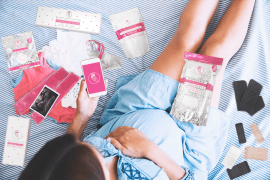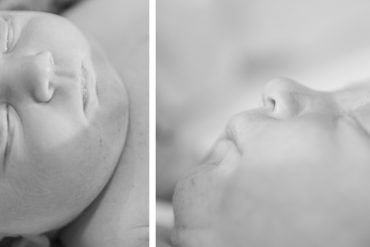Management of Raynaud’s
Raynaud’s disease is a condition that is managed, not cured. Many women will use a range of management options, with methods changing with the season, how badly they are affected, pregnancy, and breastfeeding of a newborn or an older child.
Mothers should try options they consider appropriate for themselves, and not everything at once. All women should discuss all medical, herbal, and supplement management options with their health provider first.
Keeping warm
- Prevention: Dress warmly, especially when going outside in winter. Breastwarmers, which insulate the breast, or woollen breastpads can be used to keep the breasts warm. Breastpads should be changed as soon as they become wet.
- Never allow the nipples to air dry. As soon as the baby comes off the breast the breast should be covered. If the baby is repeatedly coming off, then just covering the nipple with your hand will suffice.
- Ensure that all bras and breastpads have either a wool or synthetic fabric against the skin – cotton must be avoided, as it feels cold when wet. If you have cotton bras, then use breastpads with a synthetic or wool liner. Lanolin barrier cream or olive oil can help stop the nipple from air-drying – warm in your hands before applying.
- Repeatedly squeezing the nipple during vasospasm will help blood flow back. Doing this immediately will limit damage to the nipple caused by a lack of blood and will improve recovery times. Gently squeezing the nipple to ensure it is not constricted prior to latching will help ensure that secondary damage to the nipple does not occur. The Nbci website recommends massage of the chest muscles, below the collarbone and above the breast. If the nipple is constricted then the breast should be warmed before the baby is latched on.
- For serious vasospasm problems, increased heat can be provided from heated wheat packs or oxidising packs. Alternatively, a sock filled with rice and heated in the microwave, or a hot wet flannel in a ziplock bag can provide some help. Heat sources should be covered to protect mother and baby’s skin from burns, and the disposable hand warmer systems should be protected from leaking milk. Using a hair drier directed down your top for a minute or so after feeding can also provide relief.
- Use of breastwarmers and heating systems can increase milk supply and may also help mothers who suffer from mastitis or blocked ducts. However, an increase in milk supply can lead to engorgement and a milk oversupply problem for some women, so you may need to pump.
- Some women with Raynaud’s also suffer from Erythromelalgia, where sensitivity to heat occurs. Hot treatments will be inappropriate for these women.
For more great tips, see the full article HERE.
The good people at Summer Warmth are strong breastfeeding supporters, and really hope that the products they have developed will help other women to successfully breastfeed. Breastfeeding can be difficult at the start, and conditions like Raynaud’s, mastitis, and a low milk supply can be huge obstacles to overcome. However, with the right information and help, most breastfeeding issues can be overcome, and breastfeeding can go on to become the beautiful, bonding experience with your baby that it should be. Visit the Summer Warmth website to learn more and to look through their helpful products.










